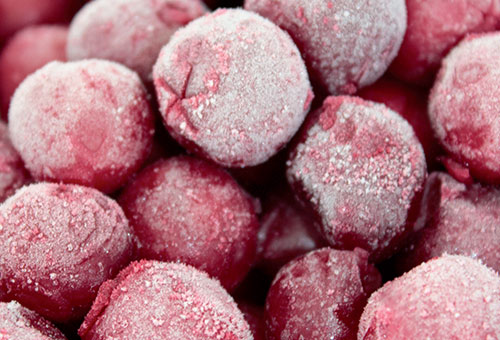 |
 |
 |
 |
 |
 |
| Fruit and Vegetables Freezing Plant |


|

|
 |
| Onion | ||
 |
 |
 |
| Courgette | Tomato | Leek |
 |
 |
 |
| Rhubarb | Strawberry | Sour Cherry |
 |
Sour cherry without stone stone tollerance
|
Sour cherry stones were found in excavations of the oldest human settlements in the Alps. The sour cherries were eaten and used due their therapeutic, particularly antibacterial, properties already then i.e. 2 000 years ago. All sour cherries are rich in vitamins: A, C, carbohydrates, organic acids, pectin and bioflavonoids. The bioflavonoids are helpful in keeping health and fit. Beside that the sour cherries are rich in carotene, potassium, calcium and magnesium which combined with vitamin C are responsible for an assistance of muscles function, the cardiac and the cardiovascular system inclusive. The sour cherries contain B group vitamins which affect a keeping metabolic processes balance and a functioning of the nervous system. The sour cherries have an anti-inflammatory effect. Sour cherry stones oil is used in a cosmetic industry for its properties. The sour cherry is perfect fruit for compotes, frozen food, jellies, jams, purée and juices preparing. They may be used in wine, tincture, liqueur and other alcohols industry. The sour cherries are ingredients of: yoghurts, cream cheese and buttermilk as well as pastries and cakes. Furthermore they may be used as an ice cream garnish, coated with chocolate and eaten raw. |
|